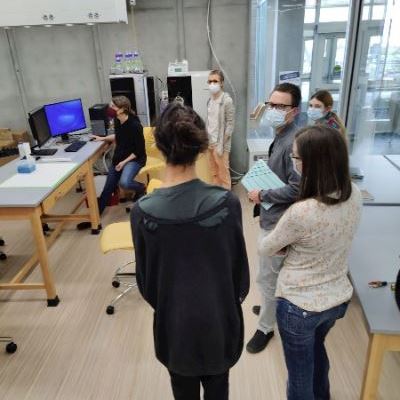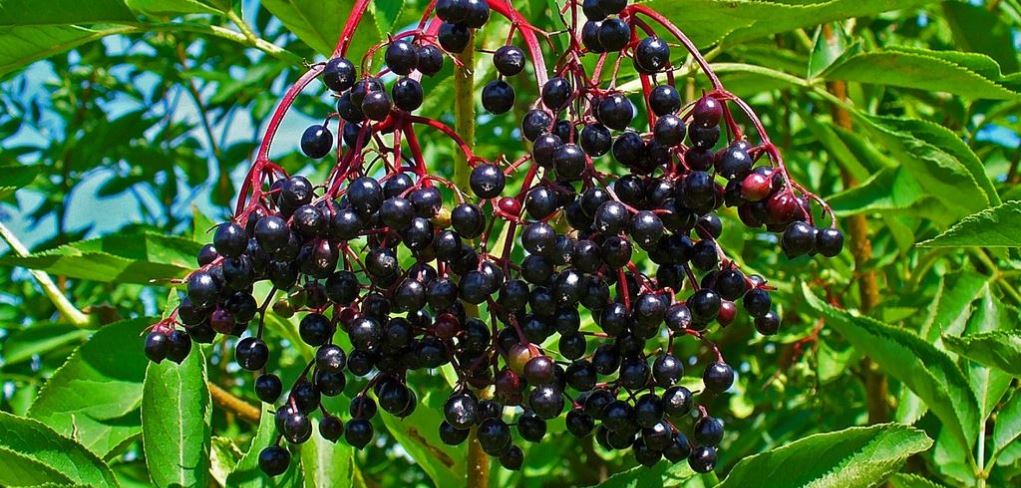Studying the Elderberry
A Medicinal Plant Trend due to Covid-19
January 12th, 2022
by Cayden Quayle, botany student
 It’s not every year that the Botany 3583 – Medicinal Plants class is available for students to sign up for, but this Fall 2021 class it was made special for all who participated by letting us assist in research based on increasing herbal supplement trends from Covid.
It’s not every year that the Botany 3583 – Medicinal Plants class is available for students to sign up for, but this Fall 2021 class it was made special for all who participated by letting us assist in research based on increasing herbal supplement trends from Covid.
We spent the first two thirds of the class working on three different projects, all of which involved a different medicinal plant and helped us learn different extraction and analysis techniques. I know I’m not the only one who would say that there were some learning curves and struggles during those first couple of projects. But we learned, and through our peers we helped each other improve our techniques. It felt like all these individual projects led up to our final CRE (course-based research) project assigned to us by the American Herbal Pharmacopeia (AHP) and the United States Pharmacopeia (USP).
Over the coronavirus years, herbal medicines have had an increase of popularity amongst Americans, including elderberries. However, there hasn’t been detailed research on all species of elderberries and if they have medicinal compounds in them. Our class was given 10 samples of 4 different species and subspecies of elderberries and asked to do research on these samples to compare to the current standard sample used in herbal supplements.

Our class came together, with the experience we’d learned over the semester’s projects. We spent days doing research and looking at previous scientific studies on elderberries and other similar fruits. After a couple zoom meetings and in-class discussions, we had all reached a method we deemed fit for our research. Over the next couple of weeks, we split the class up into three teams, all working together on grinding samples, creating extraction solvents, recording processes, maintaining the lab, and working as a unit to be effective with our time.
Finally, the day had come for us to run our samples through the proper machines to analyze them. We used High Performance Liquid Chromatography (HPLC) with our extracts to separate them out and give us a chromatogram graph of the different chemical compounds found in those extracts. It took about 40 minutes per sample, but after hours of running that machine, we had all our data for all the samples. We spent the next couple of weeks analyzing our data, discussing, and drawing conclusions on our data.
 On Monday, December 13th we had our big presentation of our research. Several people from the college of science attended, along with our contacts and the AHP and USP, were present for the presentation. Everyone was very nervous, but we had spent months working on this, so we were confident in our presentation. To sum up our conclusions, the world currently doesn’t know which specific compound(s) is medicinal, but we were able to analyze which samples had the same compounds as the current standard that’s used. We were also able to analyze the relative concentration of total compounds in each sample. There is much more research to be done in the world of elderberries, but our research helps narrow down and direct the study for those to follow.
On Monday, December 13th we had our big presentation of our research. Several people from the college of science attended, along with our contacts and the AHP and USP, were present for the presentation. Everyone was very nervous, but we had spent months working on this, so we were confident in our presentation. To sum up our conclusions, the world currently doesn’t know which specific compound(s) is medicinal, but we were able to analyze which samples had the same compounds as the current standard that’s used. We were also able to analyze the relative concentration of total compounds in each sample. There is much more research to be done in the world of elderberries, but our research helps narrow down and direct the study for those to follow.
Looking back, I was glad to have been able to take one of the last classes taught by Dr. Schramm, especially one so exciting and invigorating. My first botany class at Weber State was taught by Dr. Schramm, and through that sparked my interest in botany as a subject, so it seemed very fitting that I would get to take such an advanced class with her as one of her last classes at Weber. Through some of my other chemistry courses, we had toured pharmaceutical companies. Most of the scientists there came from a chemistry or microbiology background, with maybe one or two botanists. This course really helped to define the differences in a lab between standard chemistry procedures, and those procedures that were based on botanicals. I’m grateful for it, and the way it will help define my career after college.